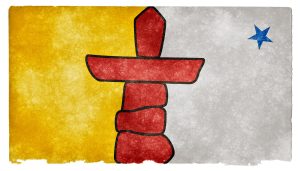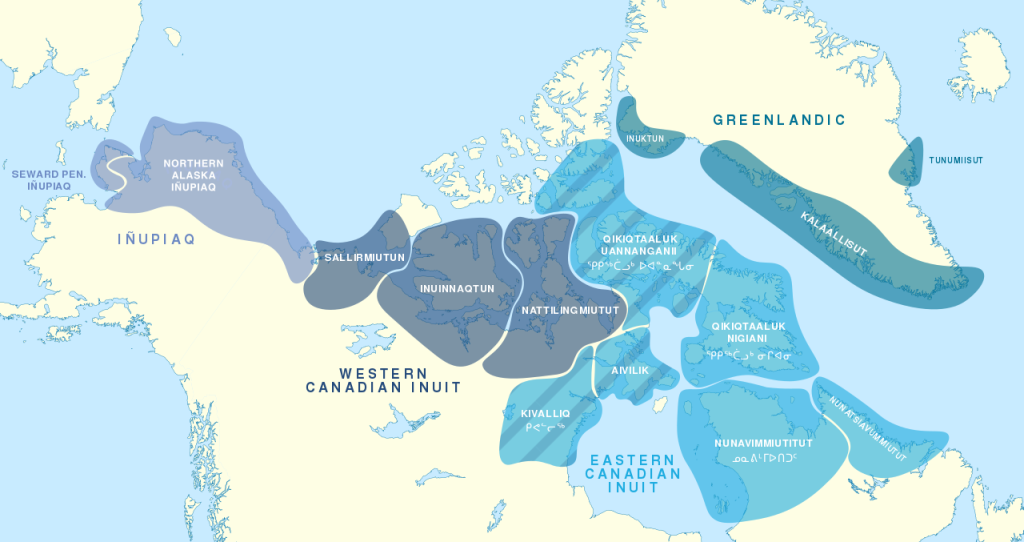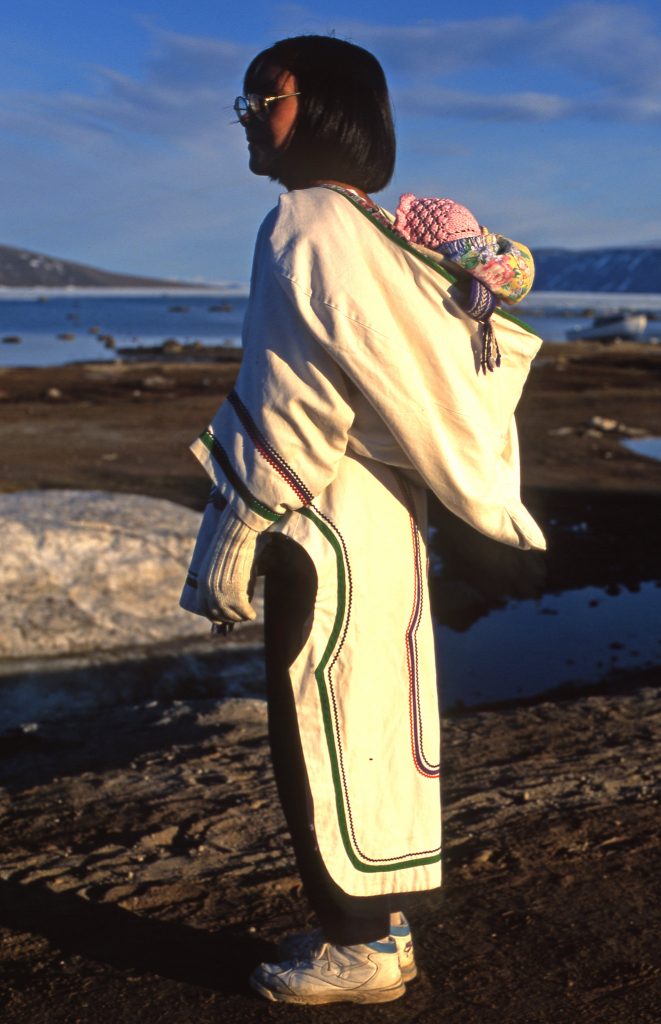Learning About Cultural Values

How much do you know about the Inuit people of Canada? Where do they live? What is their history? What is important for them in life? What are their struggles and challenges? Where have you learned about them? NOTE: Inuit means people and refers to the whole group, the community; Inuk refers to a single person; Inuktitut is the language of the Inuit. ***This is a wonderful section. I am wondering if this entire section should be in the section “Cultural Characteristics and The Roots of Culture” under the “Values and Culture” subheading?*** – Cindy
Activity: Cultural Values
Visit the Indigenous Peoples Atlas of Canada and spend about 5-7 minutes (or more if you wish) browsing through the site to learn more about the Inuit of Canada.

Next, visit “The Inuit Way: A Guide to Inuit Culture [PDF – new tab]” produced by Pauktuutit Inuit Women of Canada (2006) to introduce and help readers understand the cultural foundations of the modern Inuit. Take this opportunity to learn about the Inuit people. Spend about 5 minutes browsing through the pages. As you do this, think about the following:
- What activities, behaviours, or perspectives do you have in common?
- What aspects of their lives are different from your own experience?
- What is something you did not know about the Inuit or perhaps found interesting?

Read the section on “Traditional Inuit values” on pages 31-40 of “The Inuit Way: A Guide to Inuit Culture” and answer the True/False questions that follow.
Cultural Values Questions (Text version)
- Due to the influence of modern values on the Inuit culture, they no longer wish to preserve the traditional skills and knowledge necessary to live off the land and sea.
- The most important values in Inuit society are the capacity for individual independence, self-reliance, patience, and acceptance of realities that are beyond their control.
- An Inuit adult is expected to solve problems. If the problem seems insolvable, they should accept it and not show frustration of anger.
- Competitive behaviour and boasting about one’s accomplishments are considered signs of adulthood in Inuit society.
- Within an Inuit household, food, natural resources, and social assistance are not shared by its members as the money from labour or trapping is the main contribution that covers all expenses.
- An Inuit person who has a relatively well-paying job and does not share his earnings or purchased goods will be the target of social criticism.
- Direct requests are considered rude and aggressive; a guest may make their wishes known only by making indirect hints about what they would like.
- Inuit feel comfortable gossiping about people who are not present.
- Some anthropologists have felt that one reason that Inuit camps were so peaceful and orderly is because they value people’s peace and quiet.
- Inuit people have the right to change their mind without feeling the need to inform others of their actions. That may explain why some Inuit feel uncomfortable with work schedules and punctuality.
- An important cultural challenge between traditional Inuit values and modern Canadian cultural values is how to balance individual independence and communal commitment.
- During public meetings, when a vote is being held on an issue, it is common for Inuit people to discuss issues in favour and against in front of everyone.
- Inuit tend not to display strong emotions publicly.
- Inuit are not very socially oriented people. Someone who withdraws from the social world will likely be considered anxious or troubled and will be the object of concern.
Check your answers in footnote[1]
Activity source: Advancing Intercultural Competence for Global Learners, CC BY-NC 4.0
Think About This
- What was something you learned about the Inuit that was surprising or interesting?
- Which of the Inuit values resonate with your own? With which would you feel more comfortable?
- Which values may require an adaptation when you connect with Inuit people?
- What challenges could emerge from your interactions with Inuit persons?
TakeAway points
- Cultural values explain much of what happens in interactions where we feel things are “out of place” or where we feel “lost” because we do not understand what drives behaviours or ways of thinking.
- Value systems across cultural groups will incorporate elements with which you may identify, as well as those you will need to learn about.
Try This Strategy
It is likely that there are cultural groups or subgroups within your own country that you know little about. These could be in your immediate vicinity, neighbourhood, community, city, or province. They could speak, for example, English, French, Russian, Turkish, Cantonese, or Swahili. Take time to read about these groups from different perspectives, using different sources that include (particularly) an insider and also an outsider perspective. Use that information to gain knowledge and remember to be wary of sources that rely on profiles that may unfairly describe people.
Attribution & References
Except where otherwise noted, this page is adapted from “Learning About Cultural Values” In Advancing Intercultural Competence for Global Learners by Christine McWebb, Sandra López-Rocha, & Dr. Elisabeth Arévalo-Guerrero, CC BY-NC 4.0
-
- False. They wish to preserve their core cultural values while enjoying the comfort of modern community living.
- True. These are values that foster innovation, resourcefulness, and perseverance to increase the chance of individual and group survival in the Arctic.
- True. This reaction of frustration and anger is considered a childish response.
- False. Tact and humility are expected in adulthood. For example, bragging about hunting was believed to tempt animals to avoid that hunter and their companion, which could deprive the family and community of food.
- False. Sharing is an important value in Inuit society. All household expenses are shared by its members.
- True. Those doing well may be perceived as being successful because they were not generous enough. This is an example where Inuit may be torn between the values of the broader society and those of Inuit traditional values.
- True. A direct request would be seen as placing the guest in the lesser social position and would insult the host for not having had the insight or consideration to perceive the wishes of his guest. Direct refusals are also considered aggressive and rude.
- False. Talking about someone absent is considered a violation of that person’s privacy.
- True. Keeping peace and quiet helps to minimize possibilities for conflict and abuses of others’ rights in the community.
- True. If an Inuk alters plans, they are not criticized by their group because to do so would interfere with their decision.
- True. The challenge lies between making independent decisions regardless of previous circumstances and emphasizing commitment to work schedules, time clocks and signed agreements.
- False. Rather than voting against something, those who are against the motion will often discuss the issue privately to avoid a direct confrontation with those who disagree with them.
- True. Emotions are expressed more freely in small, more intimate groups, in the tone of voice or the lifting of eyebrows.
- False. They are socially oriented. The ideal adult is expected to maintain one’s individuality and independence while being a fully responsible and a participating member of society.

